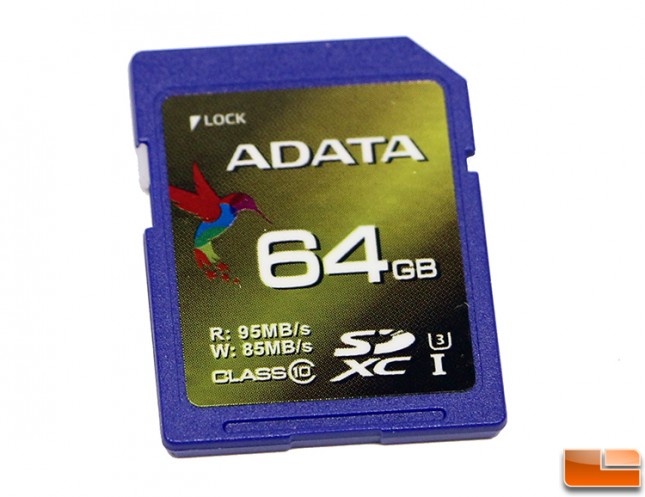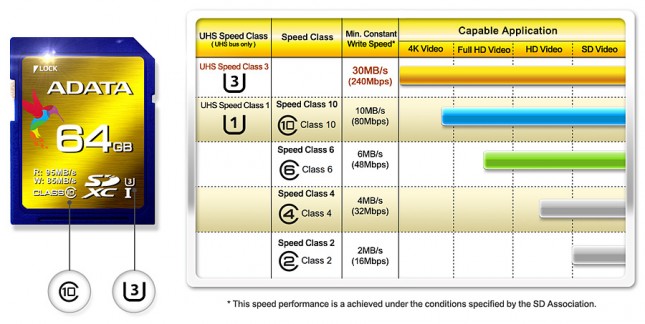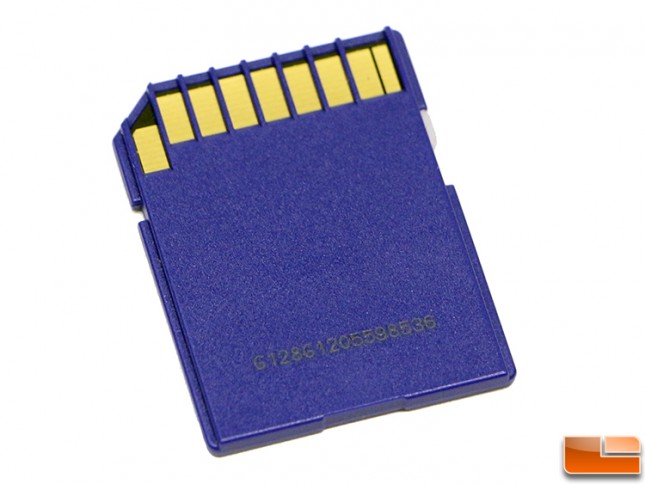ADATA XPG 64GB SDXC UHS-I Speed Class 3 U3 Memory Card Review
UHS-I Speed Class 3 SDXC Cards Arrive For 4K Video
If you are a camera enthusiast that is looking for a new memory card you should be looking closely at the UHS Speed Class symbols on the cards that you are looking at. Back in November 2013, the SD Association came up with a new high-performance specification and speed class symbol that was specifically designed to support a capturing images and video on the most demanding 4K2K video cameras. The new Ultra High Speed (UHS) Speed Class 3 (U3) symbol will indicate products capable of recording 4K2K video and will be exclusively for SDXC UHS-I and UHS-II memory cards. All UHS Speed Class 3 cards can sustain at least 30 Megabytes per second minimum continuous write speed to ensure high-quality video recordings. The ‘old’ U1 standard meant that the memory cards baring that symbol could support just a 10 MB/s minimum continuous write speed. When a UHS-I U3 card is used with todays advanced 4K2K camcorders, such as the Sony 4K Handycam FDR-AX100, JVC GY-HMQ10, Panasonic Lumix DMC-GH4, Canon EOS C500 Cinema Camera and Canon EOS C100 Cinema EOS Camera, you can rest assured that you’ll get smooth 4K video capture.
Today, Legit Reviews will be looking at the ADATA XPG 64GB SDXC UHS-I U3 memory card ( part number ASDX64GXUI3CL10-R ) that will be available online later this month for $129.99 shipped. This will be our first chance to check out a UHS-I U3 card!
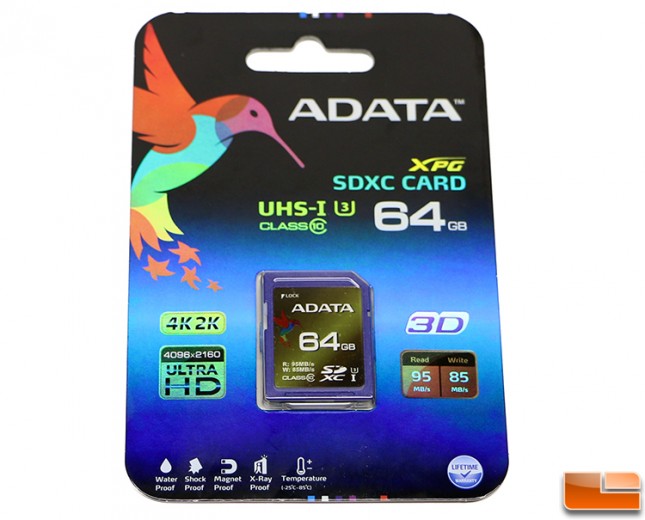 The ADATA XPG 64GB SDXC memory card comes in cardboard packaging that is easily opened without scissors thanks to a perforated pull down back cover. The packaging clearly shows the product name, speeds and that this card supports 4096×2810 or 4K2K Ultra HD footage. This SDXC card is currently one of the fastest on the market with 95MB/s read and 85MB/s write speeds.
The ADATA XPG 64GB SDXC memory card comes in cardboard packaging that is easily opened without scissors thanks to a perforated pull down back cover. The packaging clearly shows the product name, speeds and that this card supports 4096×2810 or 4K2K Ultra HD footage. This SDXC card is currently one of the fastest on the market with 95MB/s read and 85MB/s write speeds. 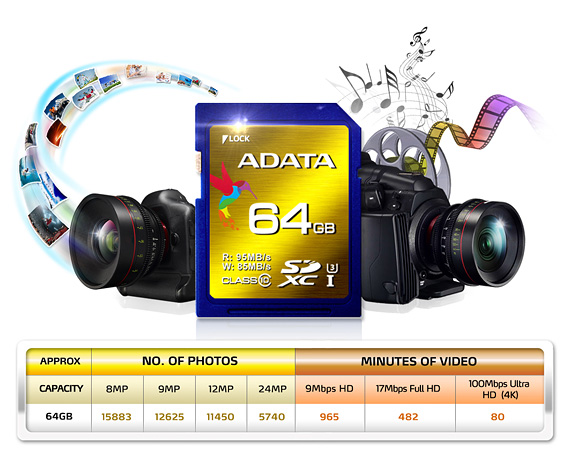
According to ADATA, this 64GB SDXC card can store a full 16 hours of 1080p full High-Definition footage (1920×1080 9Mbps H.264 AVC compression) or about 80 minutes of 100Mbps Ultra HD (4K) video content. Those shooting still photos will be able to save 5,740 images when taken with a typical 24MP camera.
ADATA XPG SDXC UHS-I Speed Class 3 Specifications:
- Supports Ultra High Speed Class 3 specification (U3)
- Speed Class 10 compliant
- Fully compatible with SDA 3.0 standards
- Supports exFAT file system
- Supports auto-standby, power-off and sleep modes
- Suitable with SDXC Card and SDXC USH-I Card enabled host devices
- Mechanical write-protection switch
- FCC, CE, BSMI, VCCI compliant
- Limited Lifetime Warranty
This memory card is called Secure Digital eXtended Capacity (SDXC) since it features a capacity over 32GB and below 2TB (2048GB). Any card that is under 32GB is considered a Secure Digital High Capacity (SDHC) card. The ADATA XPG series of SDXC UHS-I Speed Class 3 product line currently consists of just the XPG SDXC UHS-I U3 64GB card at $129.99. If that is a little too much for you, ADATA also also has 64GB and 128GB UHS-I Speed Class 3 cards in the Premier Pro series with 95MB/s read and 60MB/s write speeds for $64.99 and $129.99, respectively.
Here is a cool shot by ADATA that shows where to find the speed ratings on their cards and a chart that shows the performance from the various speed classes that are popular today. As you can see UHS Speed Class 3 memory cards must have a minimum constant write speed of 30 MB/s or 240 Mbps. It looks like all the UHS Speed Class ratings will be odd numbers, so the next speed class after this will be UHS Speed Class 5 with what will likely be 50MB/s minimum constant write speed requirements.
The back of the ADATA XPG 64GB SDXC UHS-I Speed Class 3 card shows the gold pins used to transfer data and what appears to be a serial number. ADATA XPG SDXC UHS-I U3 cards are equipped with built-in write-protect switch and automatic error correcting code (ECC) functionality and have passed extreme cold, high temperature, and X-ray stress-testing. In terms of data protection, ADATA XPG cards are advertised as having excellent long-term reliability and should allow professional photographers and enthusiasts to concentrate on taking the shot and not worrying about if the data is safe. ADATA also puts a limited lifetime warranty on the memory card, so if it should ever malfunction you should be able to send it in for replacement. Let’s take a look at the performance of this card!

